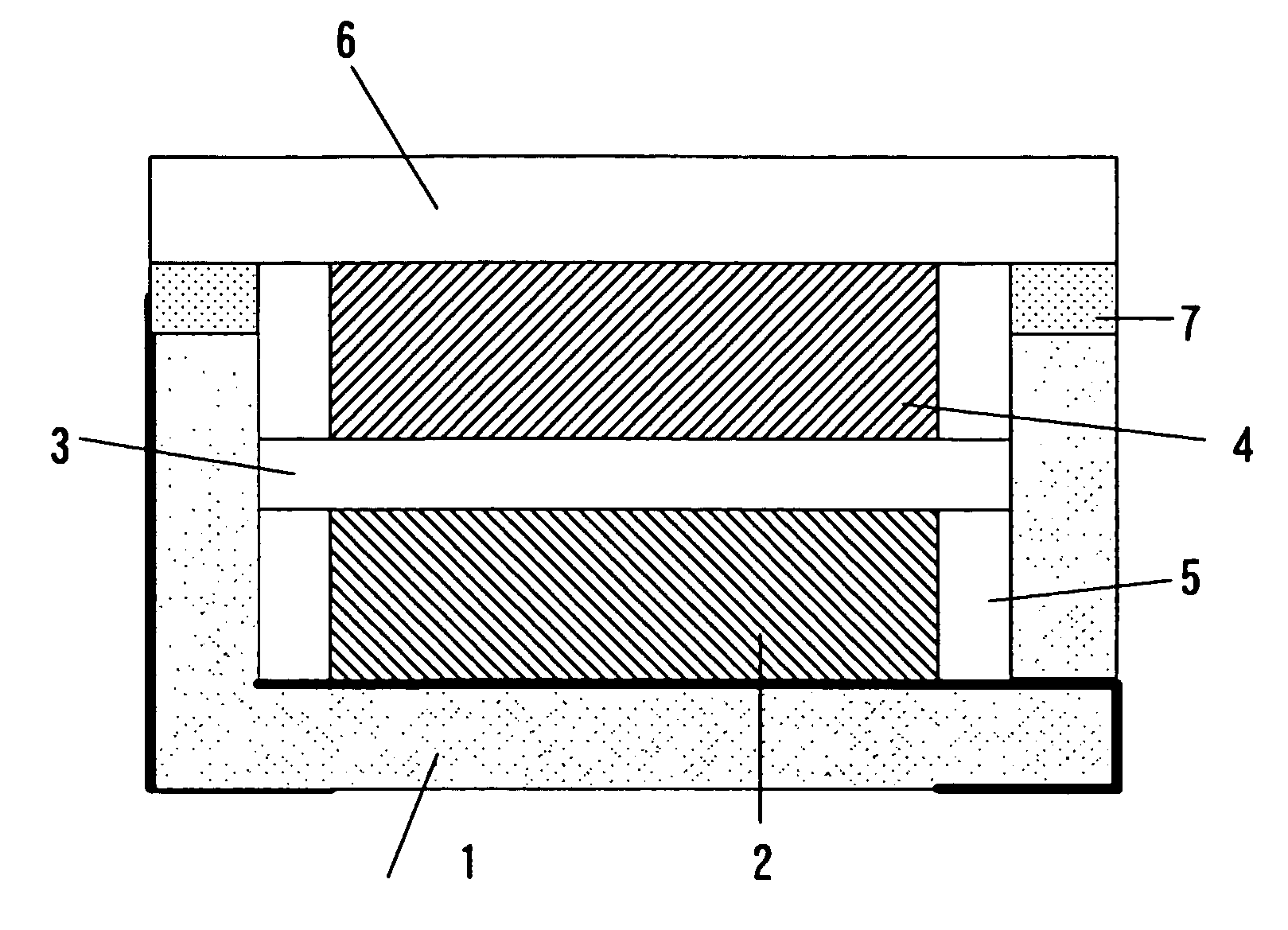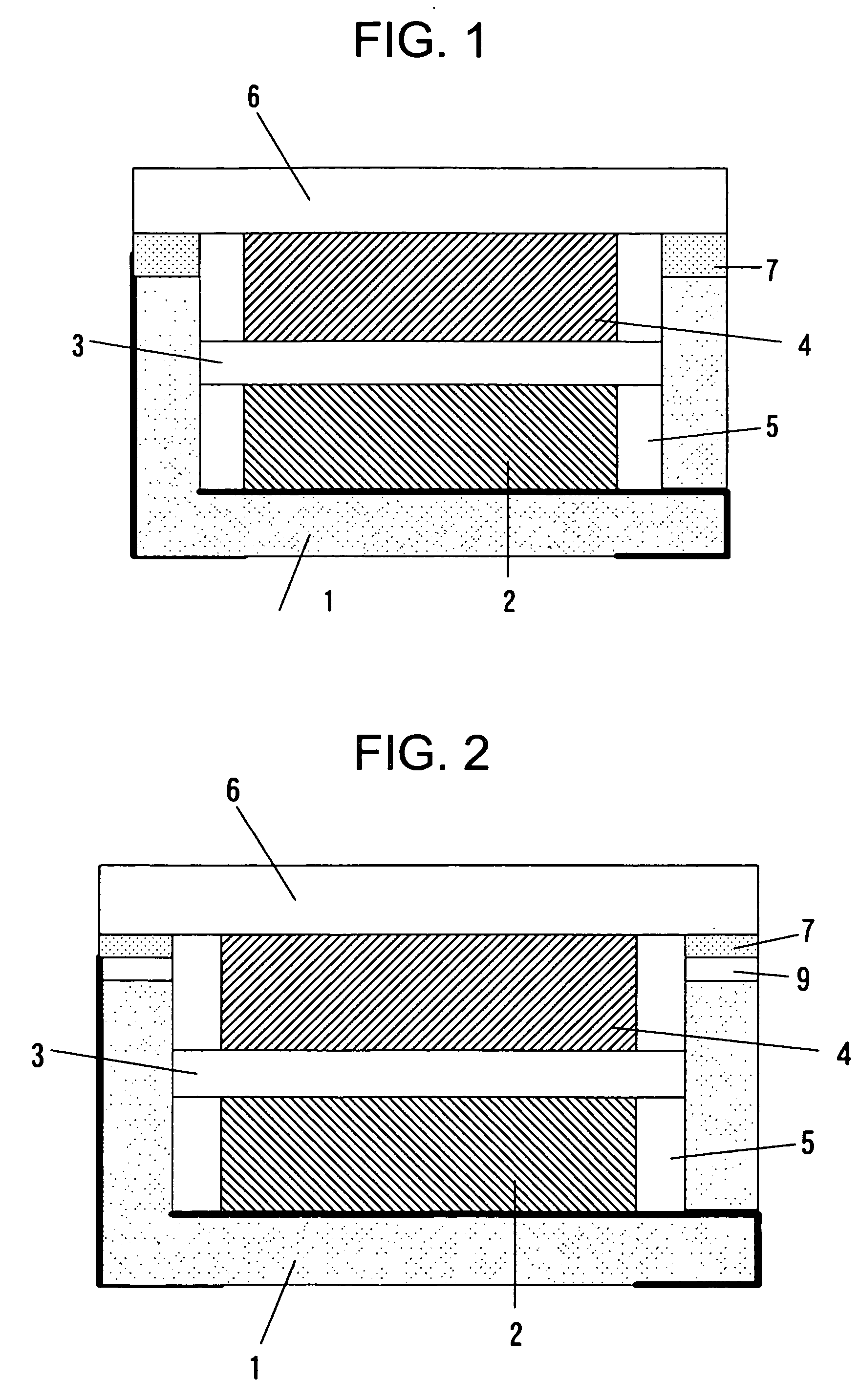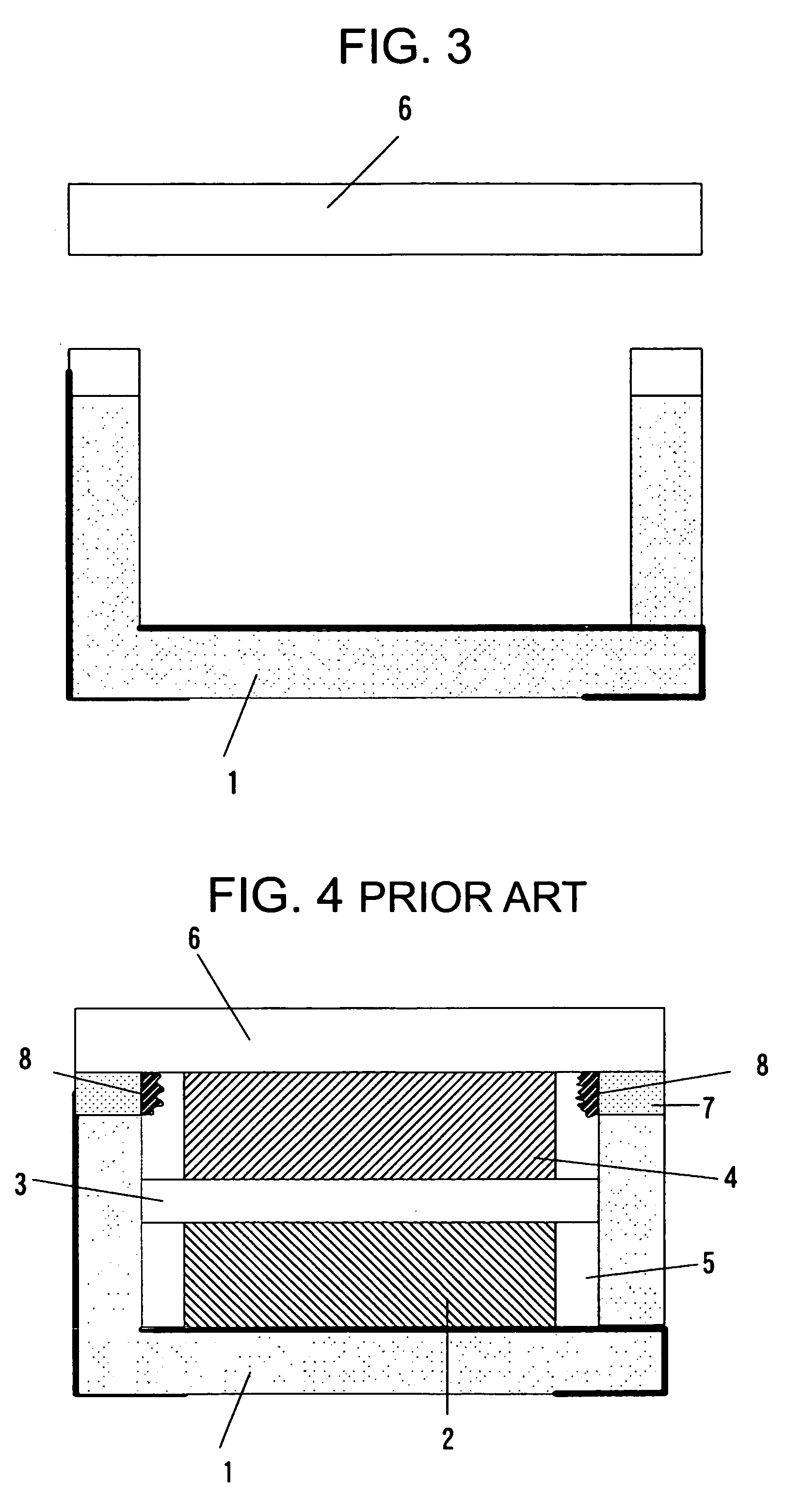Electrochemical cell
a technology of electrochemical cells and cell membranes, applied in the field of electrochemical cells, can solve the problems of increasing internal resistance, increasing capacity, and increasing voltage to be applied, and achieves the effects of increasing the resistance of internal components
- Summary
- Abstract
- Description
- Claims
- Application Information
AI Technical Summary
Benefits of technology
Problems solved by technology
Method used
Image
Examples
embodiment 1
[0051] Embodiment 1
[0052] An electrical double layer capacitor was made by using an accommodation container of a shape similar to FIG. 1. The container 1 is made of alumina, and its size is 5×5×1 mm. A nickel plating layer is formed in the side wall end part of the container 1, and the sealing plate 6 and the container 1 are welded through the nickel plating layer. A concave dent was made 0.6 mm in depth, and 3×4 mm in size. A wiring of each of the 1st connection terminal and the 2nd connection terminal was one in which the gold plating was applied to a tungsten upper part. As the sealing plate, there was used an iron-cobalt alloy plate of 0.15 mm in thickness.
[0053] Each of the electrode 2 and the electrode 4 is 2×3 mm and 0.15 mm in thickness, and was made by compression-molding activated carbon with fluororesin being used as a binder. The 1st electrode 2 was bonded to a bottom part of the concave container 1 by an electrically conductive adhesive. The 2nd electrode 4 was bonded ...
embodiment 2
[0054] Embodiment 2
[0055] Similarly, the Embodiment 2 was made by using the container 1 of a shape similar to that of FIG. 2. As the electrode, the separator and the electrolyte, they were used same ones as the Embodiment 1. The container 1 is made of alumina, and its size is 5×5×1 mm. The metal ring 9 in which the nickel plating had been applied to the iron-cobalt alloy was joined to the side wall end part of the container 1 by using the silver blazing filler. The concave dent was made 0.6 mm in depth, and 3×4 mm in size. The wiring of each of the 1st connection terminal and the 2nd connection terminal was one in which the gold plating was applied to the tungsten upper part. As the sealing plate, there was used the iron-cobalt alloy plate of 0.15 mm in thickness.
[0056] Next, as to the Embodiment 1 and the Embodiment 2, which had been thus made, the reflow soldering was performed by actually applying a cream solder to a position of the connection terminal on the board. Although a h...
embodiment 3
[0061] Embodiment 3
[0062] The Embodiment 3 is explained below. It is the electrochemical cell in which epoxy resin was used as the container. A sectional view of the electrochemical cell is the same as in FIG. 2.
[0063] As a resin used in the container, there are suited polyphenylene sulfide, polyethylene terephthalate, polyamide, polyimide, polyetherether-ketone, liquid crystal polymer, and epoxy resin. By using the resin in the container, it is possible to inexpensively make the container.
[0064] The electrode and the electrolyte used were the same as in the Embodiment 1. The connection terminals, the metal ring 9 and the epoxy resin are insert-molded, thereby forming the container 1. As the 1st connection terminal and the 2nd connection terminal, a metal plate is used. The 2nd connection terminal and the metal ring 9 are electrically connected. The metal plate and the epoxy resin are insert-molded, and the 1st connection terminal, the 2nd connection terminal and the metal ring 9 ...
PUM
| Property | Measurement | Unit |
|---|---|---|
| temperatures | aaaaa | aaaaa |
| size | aaaaa | aaaaa |
| thickness | aaaaa | aaaaa |
Abstract
Description
Claims
Application Information
 Login to View More
Login to View More - R&D
- Intellectual Property
- Life Sciences
- Materials
- Tech Scout
- Unparalleled Data Quality
- Higher Quality Content
- 60% Fewer Hallucinations
Browse by: Latest US Patents, China's latest patents, Technical Efficacy Thesaurus, Application Domain, Technology Topic, Popular Technical Reports.
© 2025 PatSnap. All rights reserved.Legal|Privacy policy|Modern Slavery Act Transparency Statement|Sitemap|About US| Contact US: help@patsnap.com



